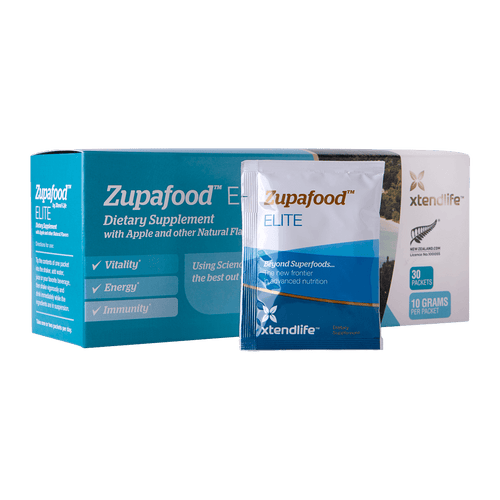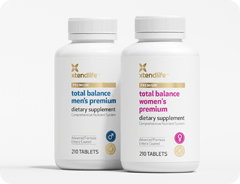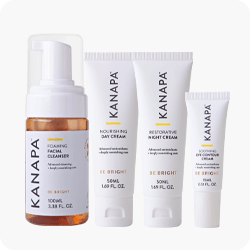In our last article, we touched briefly on the differences between artificial sweeteners and sugar; so today we will go a bit deeper into the different types of sweeteners, what to look out for, and the do’s and don’ts when reaching for something sweet.
Many people think that artificial sweeteners are those little packets seen in coffee shops – an alternative to table sugar to add to your coffee or tea. The reality is, that many of us are consuming these sweeteners on a daily basis, often without realizing it. That’s because artificial sweeteners are added to a wide range of processed foods, from granola bars to protein powder, baked goods to sodas.

So how did these come to be? Let’s start at the beginning.
Saccharin
The first artificial sweetener to be created, Saccharin was discovered in 1879 at Johns Hopkins University by a professor of chemistry who was working on coal-tar. If you’re not familiar with coal-tar, it’s the by-product created when coal is carbonized to make gas. Fast forward 140-odd years and saccharin is now used in dozens of food products.
So, what’s so bad about this sweetener? It has been linked to several allergic reactions, skin rashes, headaches, and diarrhoea. Not to mention the increased risk of bladder, vascular, and lung cancer.
On food ingredients lists, saccharin may be labeled as “sodium saccharin”, “calcium saccharin” or “acid saccharin”.
Sucralose
Just like saccharin, this was also discovered by accident. Only this time it was discovered by chemists who were trying to create insecticide. Sucralose was approved as a general-purpose sweetener in the USA by the FDA in 1999. Given its origins, it’s perhaps not surprising that once sucralose is ingested, it is basically unrecognizable by the body as food. Some studies have indicated that with regular long-term use, your gastrointestinal system may absorb the chlorinated molecules of sucralose, potentially leading to skin rashes, imbalances in gut microflora, headaches, and bladder issues. Sucralose is sold under the brand name Splenda.
Aspartame
Yet another accidental discovery, aspartame was created by a chemist who was initially testing an anti-ulcer drug. It is now considered by many to be the most dangerous sweetener. Studies with mice have shown chemical overstimulation of neural cells, leading to impaired memory and increased brain oxidative stress.
Aspartame is made from aspartic acid and is available commercially as “aspartame” and often combined with sucralose. It is also sold under the brand names NutraSweet and Equal.
While it’s important to be aware of the potential risks of the sweeteners discussed above, the good news is it’s not all doom and gloom.
Introducing Stevia…
This natural sweetener wasn’t found in a chemistry lab. Instead, it is derived from the leaves of a South and Central American shrub that is now grown all over the world, even as potted house plants. Stevia can be taken in its natural leaf form (added to tea) or dried and powdered. The process of drying the leaf enables steviol glycosides to be isolated – and this is where the ‘sweetness’ comes from. Evidence shows that stevia may also act as an insulin sensitizer that could aid glucose tolerance and clearance after a meal. The Japanese have even used stevia for decades to help people suffering from type 2 diabetes.
TIP TO CONSIDER: Some stevia sweeteners mix steviol glycosides with sucralose in the form of dextrose, or sugar alcohols. It is important to make sure you are only using pure unadulterated stevia.
We use stevia in its natural form of steviol glycosides in our Zupafood™ Range, plus fruit extracts as a natural flavor boost to make them taste great.
Not familiar with our Zupafood™ products?
Xtendlife Zupafood™ range was carefully formulated with powerful essential nutrients to supercharge your body cells. Each product in the Zupafood™ family is unique and packed with nutrient-dense powders to offer specific health benefits.
Some of our superstar ingredients include medicinal mushrooms, organic spirulina, organic chlorella, organic barley grass, organic wheat grass, marine collagen, kiwifruit extract, and grape seed extract. Zupafood™ is an all-natural whole food based with no added sugar and flavored with real fruit.
The Ultimate Superfood
Contains a unique blend of rare medicinal mushrooms to support healthy circulation while increasing energy and wellbeing without sugar.
Shop now
If you feel confused with the names of the sweeteners, here is a simple guide you can use while doing the groceries. We hope you find it helpful!

References:
- History of saccharin: http://todayinsci.com/F/Fahlberg_Constantin/FahlbergConstantin-Saccharin.htm
- For more on artificial sweeteners: http://www.sugar.org/other-sweeteners/artificial-sweeteners/
- For more on aspartame effects on memory and oxidative stress in mice: http://www.ncbi.nlm.nih.gov/pubmed/23280025
- For more on damaged hypothalamic neuros in adult mice: http://www.ncbi.nlm.nih.gov/pubmed/10802387
- For information on the safety of stevia:
- http://www.organiclifestylemagazine.com/issue/13-is-stevia-safe/
- More on increase of insulin sensitivity by stevioside: http://www.ncbi.nlm.nih.gov/pubmed/16278783


 Supplements
Supplements Superfoods
Superfoods Bundles
Bundles









